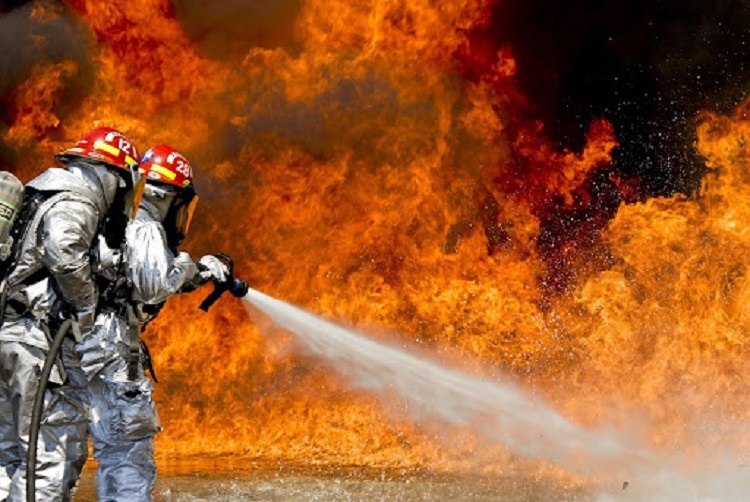How to Prevent Accidental Fire Suppression Activation
Safety is obviously a high priority for business owners. You want to make sure the equipment your workers are using is safe and of course, you want the building they work in to be safe in the event of a fire.
This means getting a reliable fire suppression system. But how do you prevent accidental fire suppression activation? How do you make sure the system only turns on when it’s needed?
From fire system certification to making sure a room is well ventilated there are many ways to help prevent your fire suppression system from turning on before it’s needed.
Read on to learn more about preventing accidental fire suppression activation.
Table of Contents
Fire System Certification
One of the easiest ways for a fire safety system to malfunction starts with the installer’s own experience. There is proper training that fire protection companies need to put their employees through before they can be allowed to work on your business’s system. If they haven’t been properly trained and certified, then there may be issues later.
For example, someone without training may not know all of the proper procedures when they go to perform maintenance on your system. They may leave the system activated during testing accidentally triggering the system in the process.
The last thing that you want is for your business to shut down due to a faulty fire suppression system. Not only will you lose money because your business can’t operate, but your fire suppression system will need to be repaired as well. It’s better to make sure everything’s done right the first time.
You want to be sure that the person working on installing or performing maintenance on your system is fully qualified and holds current certification.
Before hiring a fire protection company, you’ll want to make sure they and all of their employees have the proper certifications. This is documentation approved by the Australian government that proves the company’s employees are qualified to carry out the work.
This does two things for your company. First, it ensures that the system will work when and if it needs to. Second, it helps prevent accidental fire suppression activation.
Activation Switch Location
The next thing that you need to be careful of is where you place the switch when you install your fire suppression system. Fire protection company employees with proper fire and safety training should be able to help you make this decision.
For example, placing a button that activates the system next to many other buttons can get confusing. It can be easy to accidentally push the wrong button and trigger the fire suppression system when it isn’t needed. No matter how well trained your office staff is, these kinds of accidents can happen very easily.
The button or switch that activates the system should also be clearly labelled. Employees might get curious about what everything does in your building and there could be an accidental fire suppression activation if your switch or button isn’t properly labelled.
If an employee needs to activate the system, they should be able to do that without issue. Having the activation switch clearly labelled can help them do that in case of an emergency. This might save lives and assets for your business one day.
Finally, the last thing that you want is for people to activate fire suppression simply because they think it’s funny. This can be dangerous as it can damage equipment and cause people to hesitate in the event of a real emergency.
That means that it’s best to keep these buttons and switches out of reach of small children who might get curious about them. It means preventing people who don’t take fire safety seriously from accessing it. This is one of the easiest ways to prevent the system from activating needlessly.
Heat Ventilation
Most fire suppression systems can be activated by heat. The idea is that if a room gets to be too hot, then it probably shouldn’t be. Usually, the temperatures that set off the system are indicative of a fire.
But there are some places where heat is necessary. Restaurants, for example, generally have a large kitchen with many people working at stoves, friers, or ovens. Each of these is going to produce a lot of heat.
The problem is that fire suppression systems are installed on the ceiling so that they can put out fires on the floor easier. But heat rises naturally, so all of the heat and steam created from cooking food could lead to accidental fire suppression activation.
This is why commercial kitchens need to have their hoods and vents cleaned regularly. These devices are designed to pull the hot air up and out of the building completely. This prevents it from triggering fire suppression systems.
But grease and food particles can travel in this hot air. That means that eventually the vents will get clogged if they aren’t properly maintained. Experts in fire safety advice will be able to help you know when it’s time for your hoods and vents to be cleaned or serviced.
This will ensure that your kitchen’s vents are doing their jobs correctly. So there shouldn’t be enough hot air rising inside the room to trigger an accidental fire suppression activation. This keeps your customers and your employees safe and confident that when the system does trigger, it’ll be for good reason.
Protect Your Business From Accidental Fire Suppression Today
The best thing you can do for your business to keep it protected from an accidental fire suppression system activation is to ensure your system is dependable and meets all safety standards. A fire protection company with proper fire and safety training can help you do that.
So before you purchase a new fire suppression system, make sure that they have the proper fire system certification. It’s one of the easiest ways to put your business in safe hands.

